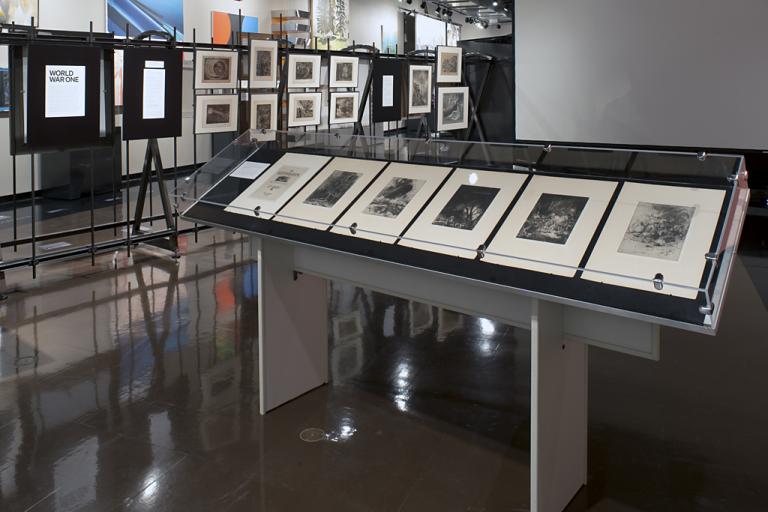Ieperen de Slechte Maere (Ypres--the Grim Reaper), Jules de Bruycker
Artwork Overview
Jules de Bruycker, artist
1870–1945
Ieperen de Slechte Maere (Ypres--the Grim Reaper),
1916
Where object was made: Belgium
Material/technique: Japanese paper; etching
Dimensions:
Image Dimensions Height/Width (Height x Width): 504 x 388 mm
Sheet/Paper Dimensions (Height x Width): 536 x 396 mm
Image Dimensions Height/Width (Height x Width): 19 13/16 x 15 1/4 in
Sheet/Paper Dimensions (Height x Width): 21 1/8 x 15 9/16 in
Mat Dimensions (Height x Width): 25 x 20 in
Image Dimensions Height/Width (Height x Width): 504 x 388 mm
Sheet/Paper Dimensions (Height x Width): 536 x 396 mm
Image Dimensions Height/Width (Height x Width): 19 13/16 x 15 1/4 in
Sheet/Paper Dimensions (Height x Width): 21 1/8 x 15 9/16 in
Mat Dimensions (Height x Width): 25 x 20 in
Credit line: Museum purchase: Letha Churchill Walker Memorial Art Fund
Accession number: 1993.0319
Not on display
If you wish to reproduce this image, please submit an image request










